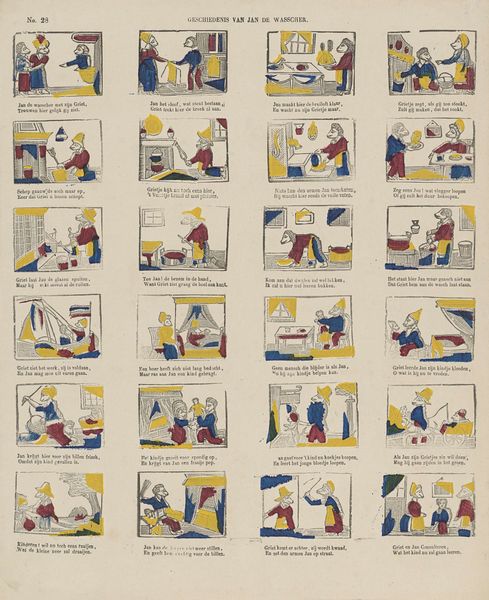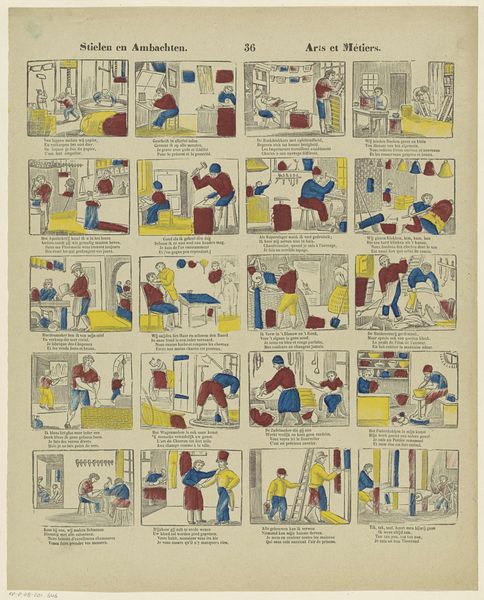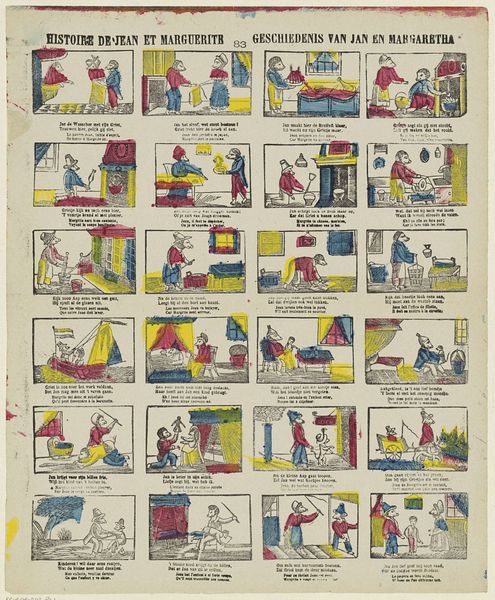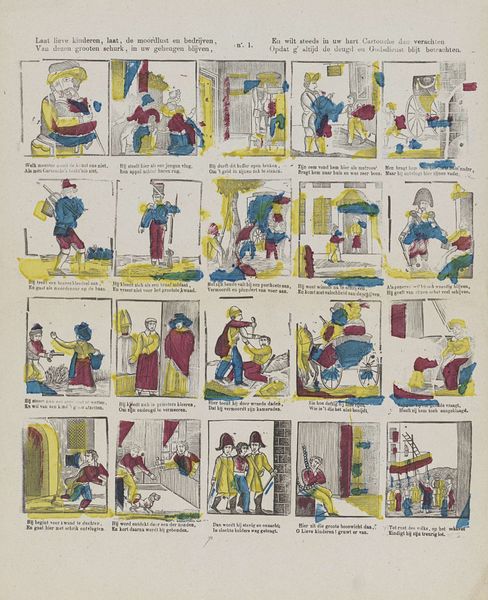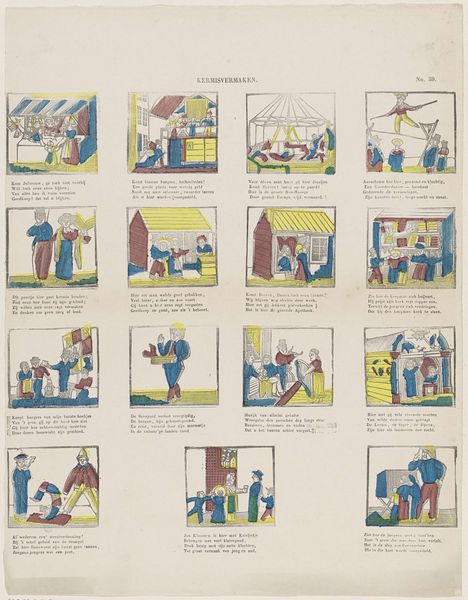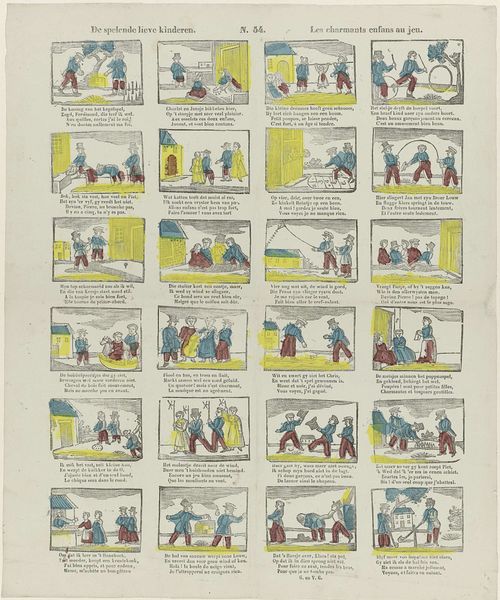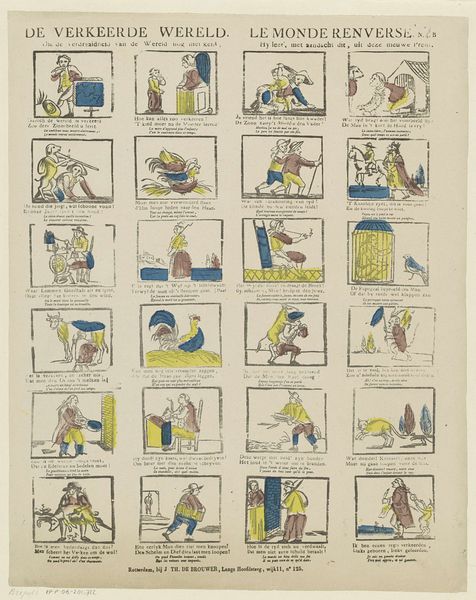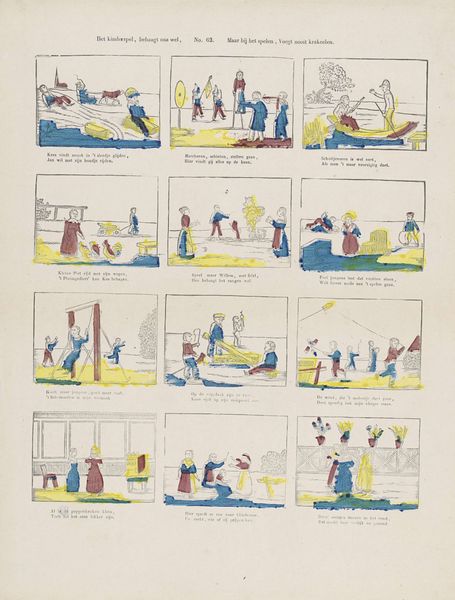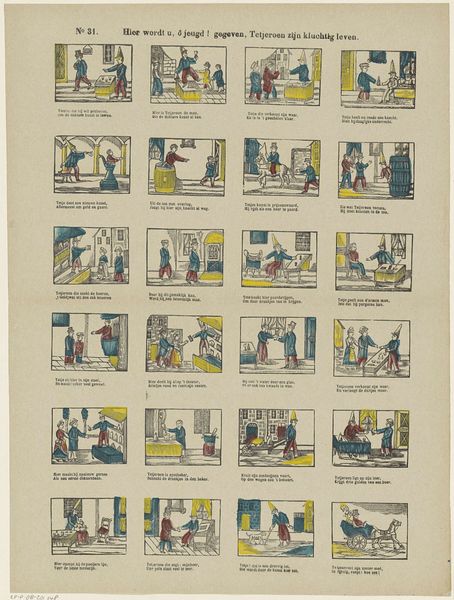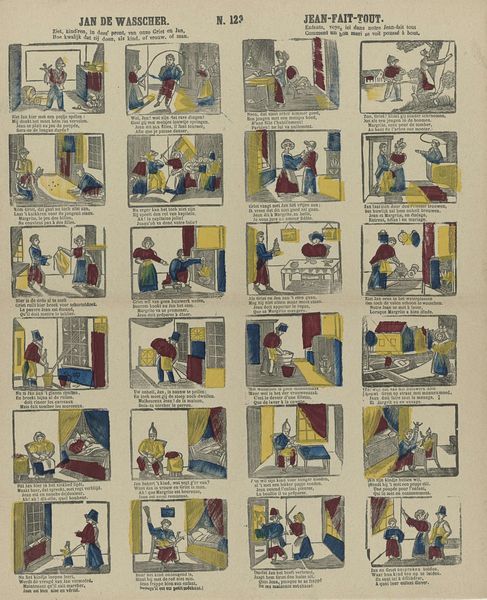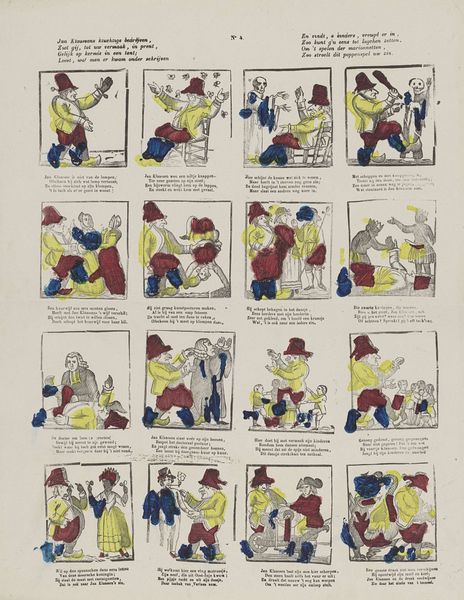
lithograph, print
#
narrative-art
#
lithograph
# print
#
genre-painting
Dimensions: height 398 mm, width 325 mm
Copyright: Rijks Museum: Open Domain
Curator: This lithograph, "De historie van Tijl Uilenspiegel", a series of prints dating from 1848 to 1881, invites a closer look at the materials used in the printing process and the social context of its creation. It's currently held at the Rijksmuseum. What strikes you first about it? Editor: Initially, I am captivated by its graphic composition, structured into numerous small scenes like frames from a silent film or comic strip. The muted color palette adds to its antique feel and rhythmic disposition of the figures, their poses, and their dynamic arrangements on the paper. Curator: Exactly. These panels reflect a wider trend in 19th-century popular culture. Cheap printmaking techniques allowed for the broad dissemination of narratives. Tijl Uilenspiegel's tale, known for its social critique and playful trickery, found an ideal medium here, enabling wide accessibility to a potentially subversive story. Considering this accessibility, do you believe that impacts how one can judge it formally, separate from this social aspect? Editor: Undeniably. Formal elements such as line quality and composition reinforce the overall narrative. For example, each frame, contained yet open, uses curvilinear, loose and lively hatching to give a whimsical air that enhances the comic effect—essential, as it directs us through the various chapters. It becomes an exercise in how constrained formal means shape broad narratives of public concern, or rebellion against it, even. Curator: A fantastic way to understand how narrative can become more widely shared through material, making something that looks rather banal turn subversive. That cheap lithograph became an avenue for ideas to spread like wildfire among regular people. These images functioned in society as important touchstones for the Uilenspiegel figure, so by creating new modes of storytelling through inexpensive creation, more of that social messaging became open. Editor: Reflecting on the balance between aesthetic construction and production process certainly broadens my reading. This is more than a collection of vignettes; it represents an approach to understanding image-making itself. Curator: Yes, I find seeing the lithograph as not just an illustration but also as evidence of how stories gained social significance—mass printed imagery truly changed public culture!
Comments
No comments
Be the first to comment and join the conversation on the ultimate creative platform.
